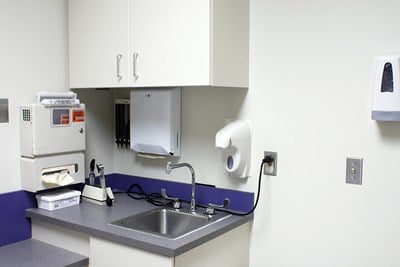Damage to your heart can cause its muscle to grow weak or stiff, resulting in congestive heart failure.
Unfortunately, the condition is chronic and progressive, but there are treatments available that can improve symptoms and overall increase your quality of life. Here is an overview of types of treatment that are used for treating congestive heart failure.
Medications
Research suggests that treating heart failure with medications that target specific symptoms is the best form of treatment. It is vital that dosage instructions are followed when taking the drugs, and that changes are not made before talking with a healthcare professional. Common medications include:
- Aldosterone inhibitors
- Angiotensin converting enzyme (ACE) inhibitors
- Angiotensin II receptor blockers (ARBs)
- Angiotensin Receptor-Neprilysin Inhibitors (ARNIs)
- Beta blockers
- Blood vessel dilators
- Calcium channel blockers
- Digoxin
- Diuretics
- Heart pump medication
- Potassium or magnesium
- Selective sinus node inhibitors
Lifestyle Modifications
In order to prevent further damage and slow the progression of congestive heart failure, you will need to make lifestyle changes and adopt good habits. Making lifestyle changes combined with taking medication can help you live a productive life and alleviate symptoms. The benefits are felt right away. Here’s what you need to do:
- Stop all use of tobacco.
- Maintain a healthy weight.
- Reduce your stress levels.
- Avoid excess alcohol consumption.
- Exercise regularly.
- Eat a low-sodium diet.
- Control blood pressure and cholesterol levels.
Surgical Treatments
While not a first choice option, surgery is sometimes used to treat congestive heart failure if medication and lifestyle changes are not working as expected. Some common procedures include:
- Angioplasty: This procedure removes plaque buildup in the coronary arteries. Removing the buildup can increase blood flow and improve or even resolve heart failure symptoms.
- Coronary artery bypass: This is a procedure that involves routing blood around a blocked artery. This is accomplished by removing healthy blood vessels from another part of your body (leg or chest wall), and then attaching the vessels to the damaged artery, so that blood can flow around it.
- Left ventricular assist device (LVAD): The LVAD supports your heart as it pumps blood throughout your body. It is often implanted in people who are waiting for heart transplant surgery.
- Valve replacement: As heart failure worsens, the heart valves, responsible for directing the flow of blood through the heart to the rest of the body, are unable to fully close. Blood will then leak backward, but valves can be repaired or replaced depending on the patient’s needs.
- Heart transplant: When heart failure is severe and other treatments have been tried, replacing the damaged heart with a healthy donor heart is needed.



